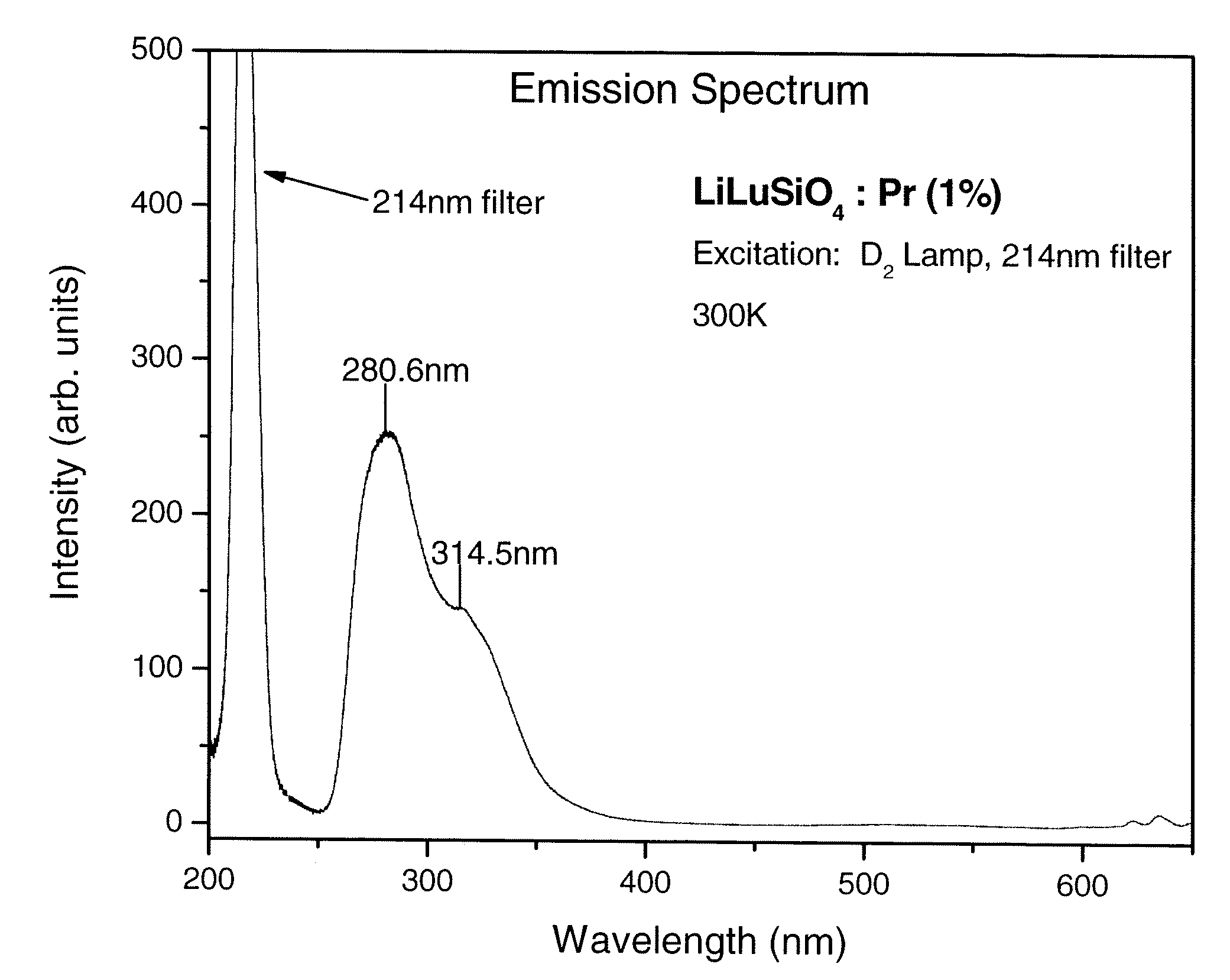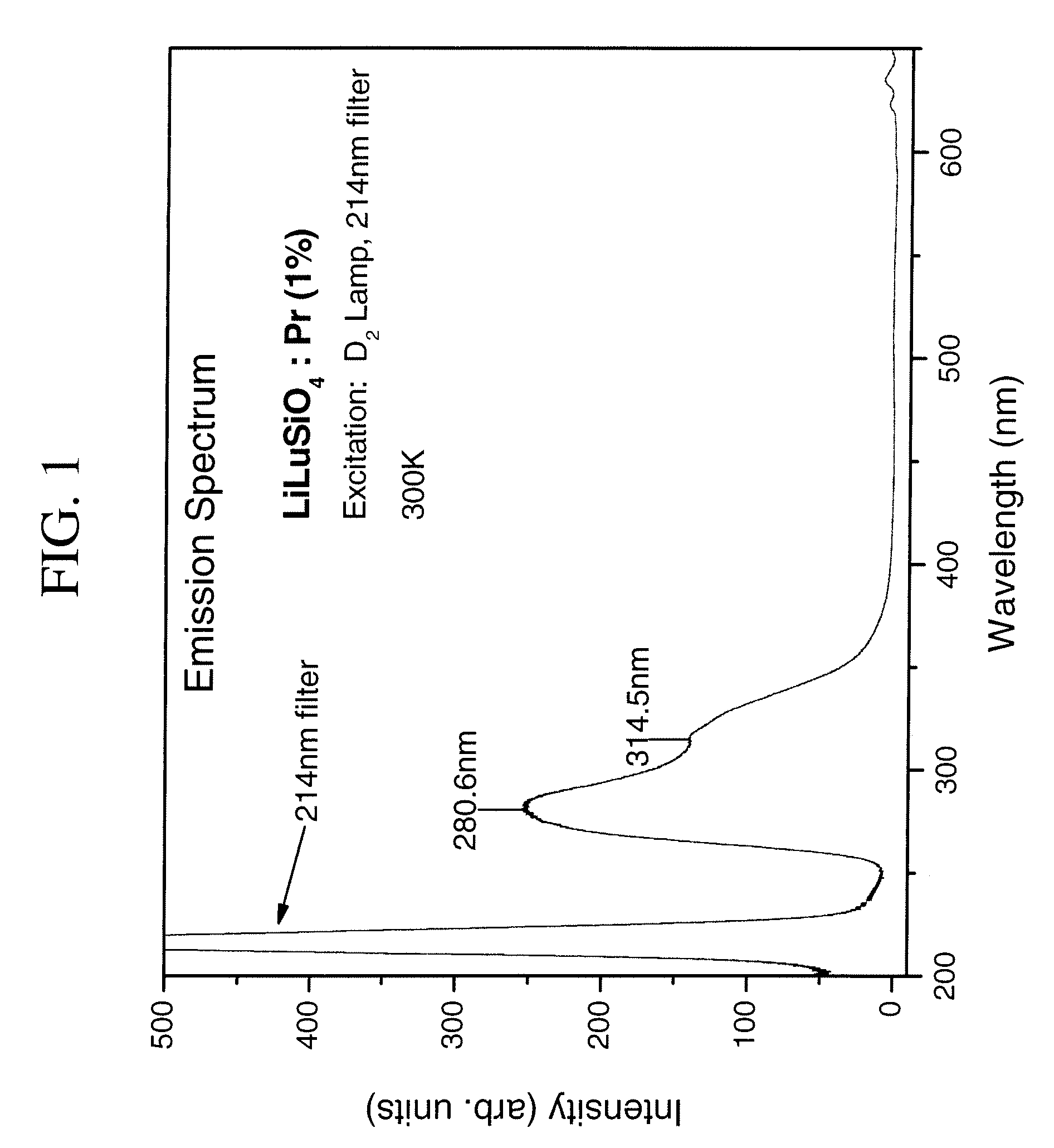Scintillator materials based on lanthanide silicates or lanthanide phosphates, and related methods and articles
a technology of lanthanide silicates and scintillator materials, applied in the field of materials for detecting high energy radiation, i, can solve the problems of low light yield, inability to produce large-size, high-quality single crystals, and many other problems
- Summary
- Abstract
- Description
- Claims
- Application Information
AI Technical Summary
Benefits of technology
Problems solved by technology
Method used
Image
Examples
example 1
[0048]A set of samples of a praseodymium-activated scintillator composition was prepared in this example. The matrix portion of the composition had the formula LiLuSiO4, while the level of praseodymium activator was varied (1%, 2%, 5%, and 10%). An illustrative preparation is described, for 5 grams of LiLu0.99Pr0.01SiO4. In this preparation, 0.7426 grams of Li2CO3 (10 mole % excess), 3.5990 grams of Lu2O3, 0.0311 grams of Pr6O11, and 1.2522 grams of silicic acid were mixed with 2 mole % LiF (flux). The mixture was heated to 800° C. for two hours in a slightly-reducing atmosphere of 0.5% H2. The resulting sample was further ground and reheated at 1000° C. for five hours, under the same atmosphere. All grinding steps were carried out in air. (Component proportions were adjusted to provide the samples below). The nominal formula for each of the four compositions, after the re-heating step, was as follows:
LiLu0.99Pr0.01SiO4; (1% activator)
LiLu0.98Pr0.02SiO4; (2% activator)
LiLu0.95Pr0.05...
example 2
[0050]In this example, a phosphate-based scintillator material (5 grams) was prepared according to the present invention. The matrix portion of the composition had the formula K3Lu(PO4)2, while the level of praseodymium activator was 5%. In this preparation, 2.292 grams of K2CO3 (10 mole % excess), 1.9669 grams of Lu2O3, 0.0886 grams of Pr6O11, and 2.8858 grams of DAP (diammonium hydrogen phosphate; 10 mole % excess) were mixed and heated to 600° C. for two hours in air. The product was re-ground and reheated to 950° C. for five hours, in a slightly-reducing atmosphere of 0.5% H2. All of the grinding was carried out in air.
[0051]The emission spectrum for this sample was also determined under UV and X-ray excitation, using an optical spectrometer. FIG. 2 is a plot of wavelength (nm) as a function of intensity (arbitrary units) for sample. The peak emission wavelength for the sample was about 257 nm. (The peak emission may vary for each particular phosphate compound). As in the case o...
PUM
 Login to View More
Login to View More Abstract
Description
Claims
Application Information
 Login to View More
Login to View More - R&D
- Intellectual Property
- Life Sciences
- Materials
- Tech Scout
- Unparalleled Data Quality
- Higher Quality Content
- 60% Fewer Hallucinations
Browse by: Latest US Patents, China's latest patents, Technical Efficacy Thesaurus, Application Domain, Technology Topic, Popular Technical Reports.
© 2025 PatSnap. All rights reserved.Legal|Privacy policy|Modern Slavery Act Transparency Statement|Sitemap|About US| Contact US: help@patsnap.com



